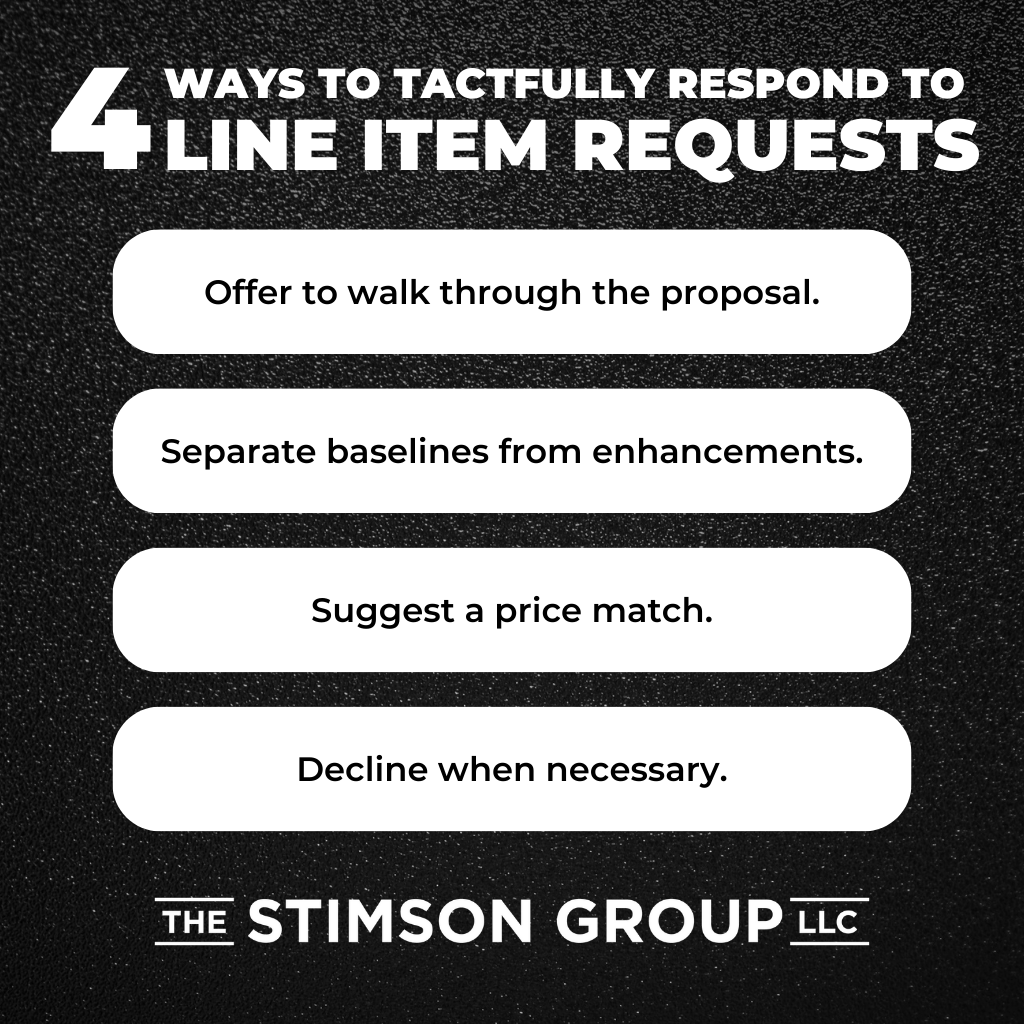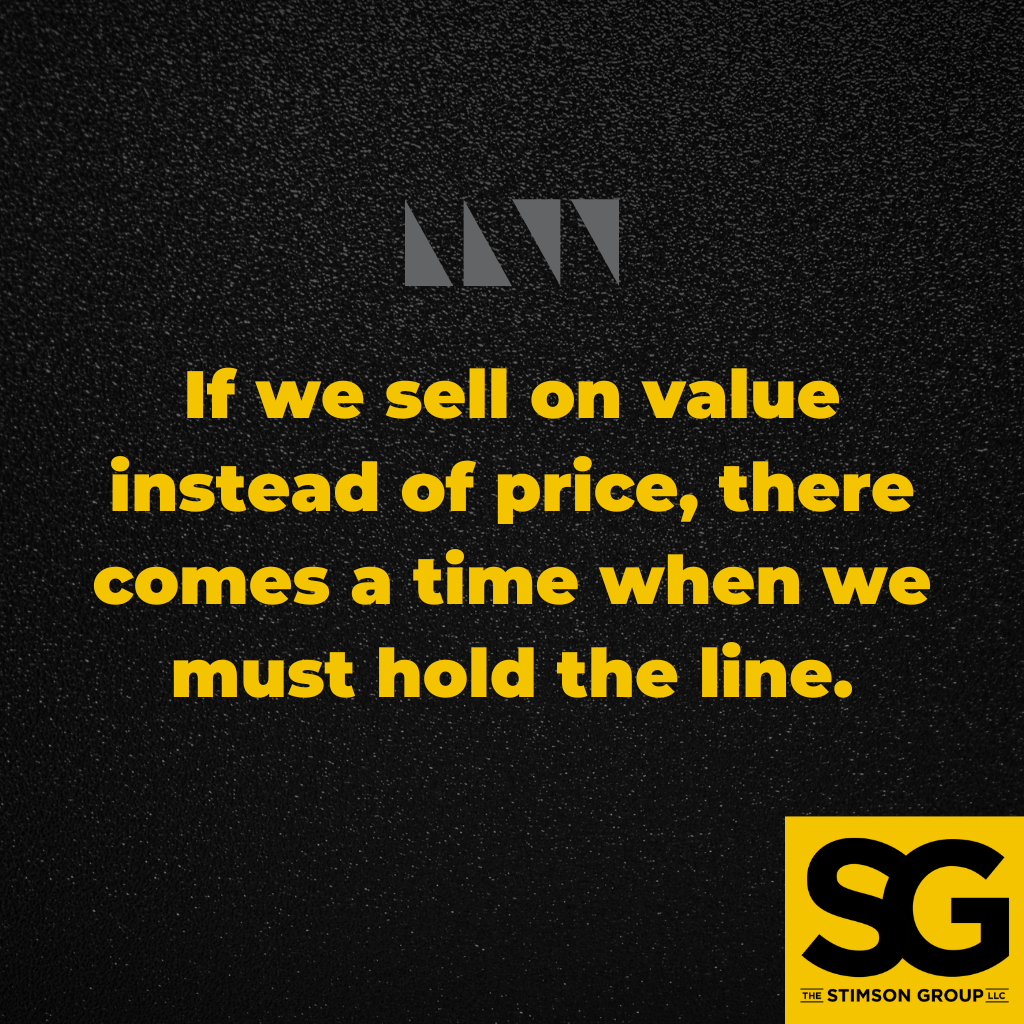
Listen instead on your Monday Morning Drive:
I’m so proud of the progress we’ve made in moving away from detailed line item pricing in our proposals and quotes.
As an industry, we’ve embraced value-focused selling through scope of work packages rather than nitpicking every cable and connector. We lost a lot of price shoppers during recent upheavals, like the pandemic. Things seem to be heading in a positive direction.
But still, on occasion, clients request the dreaded line item breakdown after receiving a carefully crafted value-based proposal. What gives? How should we handle these lingering questions in a way that builds trust and maintains relationships?
Why Clients Request Line Item Pricing
Rather than assume ill intent, the best first step is to simply ask the client what purpose the information will serve. The answers tend to fall into two main categories:
- Price Comparisons. Around 90% of the time, the prospect wants to compare prices against other bids.
- Lack of Understanding. The other 10% of the time, the client simply doesn’t understand what your services cost and assumes line item pricing is the best way to find out.
In both cases, open communication is key. Passive-aggressive approaches only damage trust and relationships further.
Why We Should Avoid Caving
It’s tempting to fire back a 42-page equipment manifest to snarkily prove a point. But that helps no one. It’s your job to provide clients with what they actually need, not just what you think they want.
Still, a subset of tactical, transactional buyers insist on detailed breakdowns they feel equip them to make decisions. How do we help with them without damaging our working relationship?

4 Ways to Tactfully Respond
I’ve found four effective methods for responding to line item requests:
- Offer to walk through the proposal. Book a call to explain how the proposal elements come together to provide value. Use this as a trust-building exercise. Explain how it will help you create the detail they need.
- Separate baselines from enhancements. Reframe the proposal. Keep baseline elements bundled — those are non-negotiable — while itemizing any optional enhancements. Clients can customize while preserving core integrity.
- Suggest a price match. Invite them to provide redacted competitor quotes with line items. You can match the format without compromising your bundling strategies.
- Decline when necessary. If all else fails, part ways amicably. Not every client fits your business, and that’s okay. Better to know that before you overshare.
Moving Forward
Detailed line item breakdowns imply transactional relationships, not partnerships. Line item pricing has a place in certain business models and channels (rental orders, multi-year contracts, venue agreements, etc.), but in the event business, they generally indicate that the client is a poor fit for your company.
If we sell on value instead of price, there comes a time when we must hold the line. The clients who benefit most embrace scope-based proposals centered on achieving their goals.
Isn’t that what an ideal customer looks like to you?






Leave a Reply